D
Dave Coster
Guest
STILL THERE

I’ve fished the Old River Nene at Benwick a couple of times since moving to the Midlands, also recently having a look at nearby March, both areas being immensely popular match venues in winter. It’s been that way for several decades, because the canal-like waterway is normally crammed with fish when the weather turns colder. This has created a continued demand for a cult bait most anglers have probably forgotten about, or simply can’t get any more: tiny maggots called squatts. They were very important when I used to fish the London and Oxford Canals many years ago, even becoming a main line of attack. On some venues it was possible to get through nearly a couple of pints of these tiny feed maggots in a five-hour match, not just catching small fish. Skimmers, bream and quality roach loved this bait which, apart from being used with pole and whip tackle, also spawned a big trend with light canal waggler tactics.
STARTING OVER
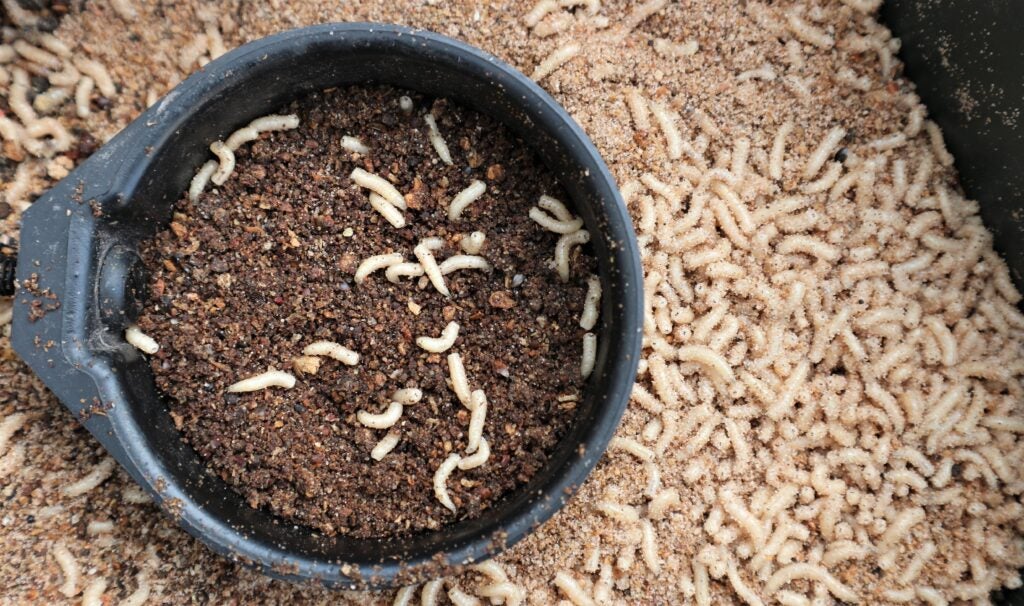
There’s a bait farm just off the A1, north of Grantham at Long Bennington. Stopping off to pick up my usual maggots and casters, they told me they had started producing squatts again, so I thought it would be interesting to buy a pint and give them a go. I’m pretty sure these tiny maggots haven’t been used on many of the places I regularly fish and it would be fascinating to revisit old techniques, finding out if this bait could still work its magic. It was freezing cold and normal approaches were struggling anyway, which only added to the mystery factor. As I prepared some dark groundbait to use alongside, memories came flooding back. Catching big bags of skimmers by spraying white squatts over a waggler on the Grand Union on venues like Grove Church, and doing similar with red squatts on the highly coloured Oxford Canal towpaths, enjoying bumper bags of roach there. It was a bit like bloodworm and joker fishing, always keeping busy.
NAILING IT
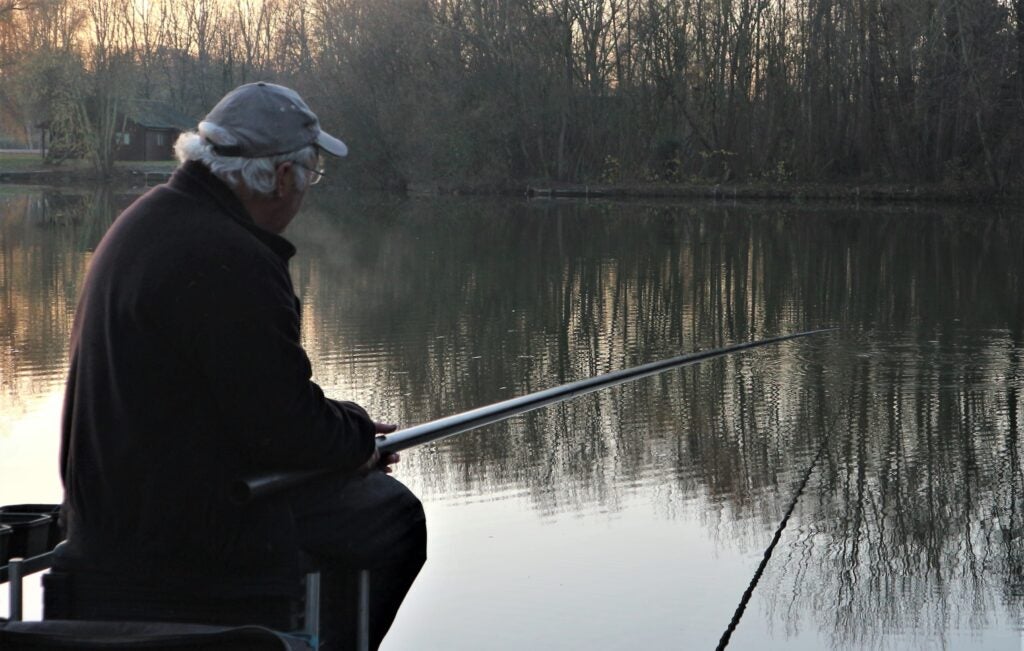
I began by cupping in a couple of hard balls of groundbait, well laced with squatts, finishing off with a powdery portion, to try and stir things up more quickly. I wasn’t sure about loose feeding, because the swim I had chosen was quite deep. I didn’t want to end up chasing all over the place to keep in touch with the fish, plus there were lots of small roach, rudd and perch to contend with. I needn’t have worried because it took a long time to get a reaction. It was one of those damp, cold, dour winter days. Nobody seemed to be catching much, but having said that, I started getting bites after an hour. To begin with they were iffy takes, with the odd hand-sized skimmer resulting when I did manage to connect. As was always typical with squatts, most action occurred on the drop as my hook bait neared bottom, or just after it settled. This prompted me to feed small balls of groundbait more regularly, which began to build the swim up nicely.
PERFECT RIGS
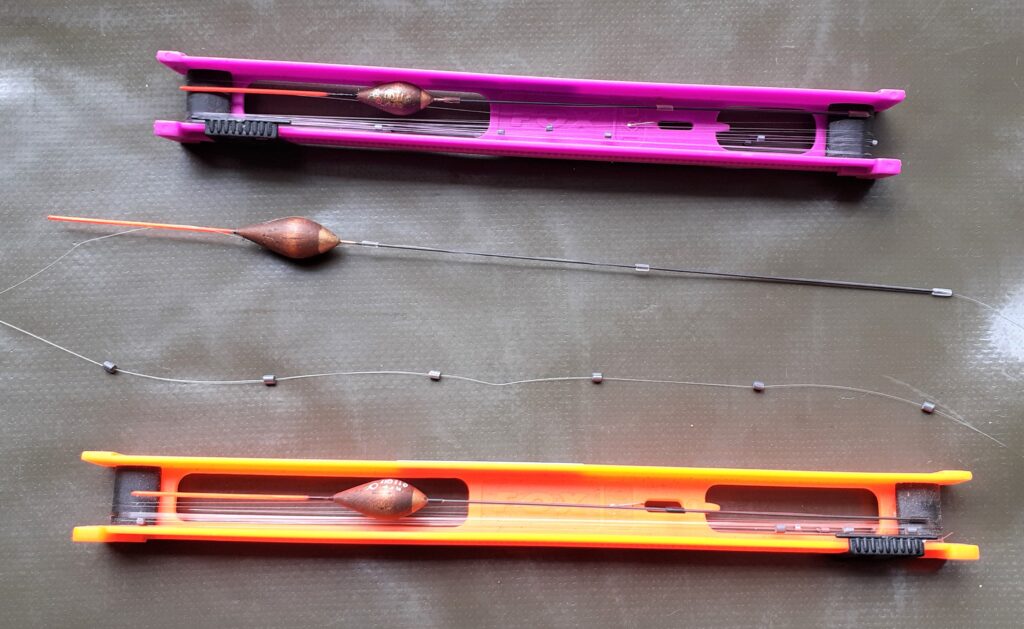
These old Milo pole floats were spot-on with spread shot from just below mid-depth, helping to slow down the fall of single or double squatt hook baits. I did get tempted into trying loose feeding with a catapult, but quickly stopped when I was blitzed by small stuff. The bigger fish were down deep and didn’t want to budge, so it was back to groundbait as a medium to get the small grubs closer to the deck. I tried slightly suspended hook baits but that didn’t work. The best setting was to have my rigs a couple of inches over-depth. If a bite didn’t come on the way down, or after a couple of minutes with the rig stationary, it was best to lift the tackle up and let it settle again. This tactic caught better-sized roach on the move, along with bigger skimmers just after settling. Those tiny maggots were definitely waking the fish up, so I began to try some old tricks that worked all those years ago, switching to pinkie and then a big maggot on the hook.
GROUNDBAIT EFFECTS
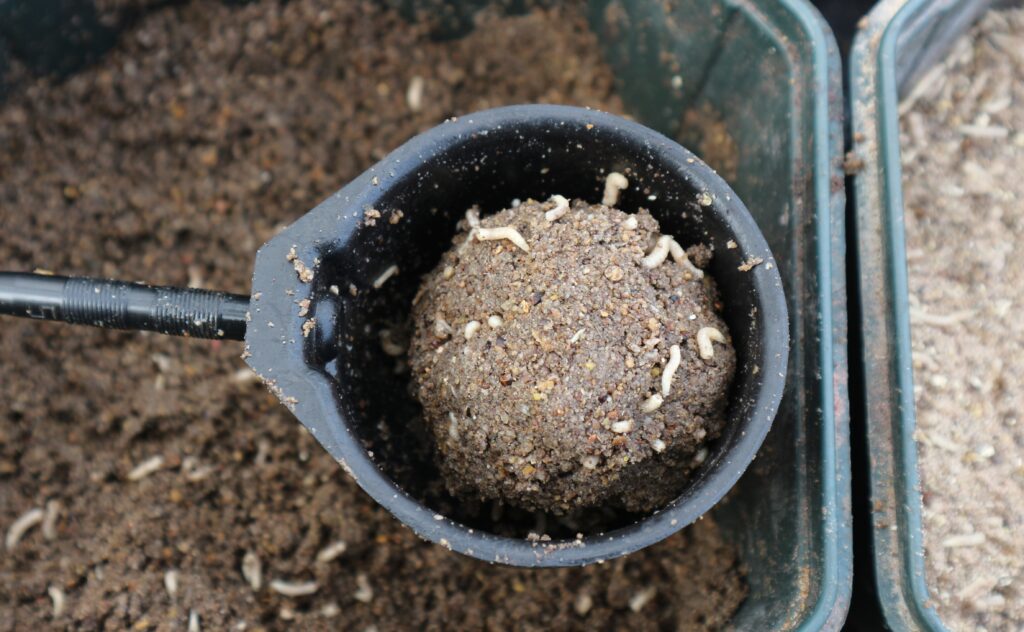
I had forgotten how you can get away with feeding groundbait more regularly with squatts, mainly using it as a medium to get the tiny maggots where you want them. Every time I cupped in a generous ball, probably containing around 50 to 60 grubs, the fish homed in on it straight away. This was interesting because having tried similar tactics with my usual chopped worm and caster approach recently, anything in the swim was backing off after the third or fourth time of feeding. It was mainly small skimmers, perch and roach that were responding straight away, while if I had to wait a bit longer for bites to develop, bigger samples resulted. It was also interesting to find out bites came quicker with a bigger pinkie or red maggot on the hook, although the better-sized skimmers seemed to prefer double squatt offerings. The best response came by feeding big balls of groundbait occasionally and small ones more regularly in between.
TEASING THEM
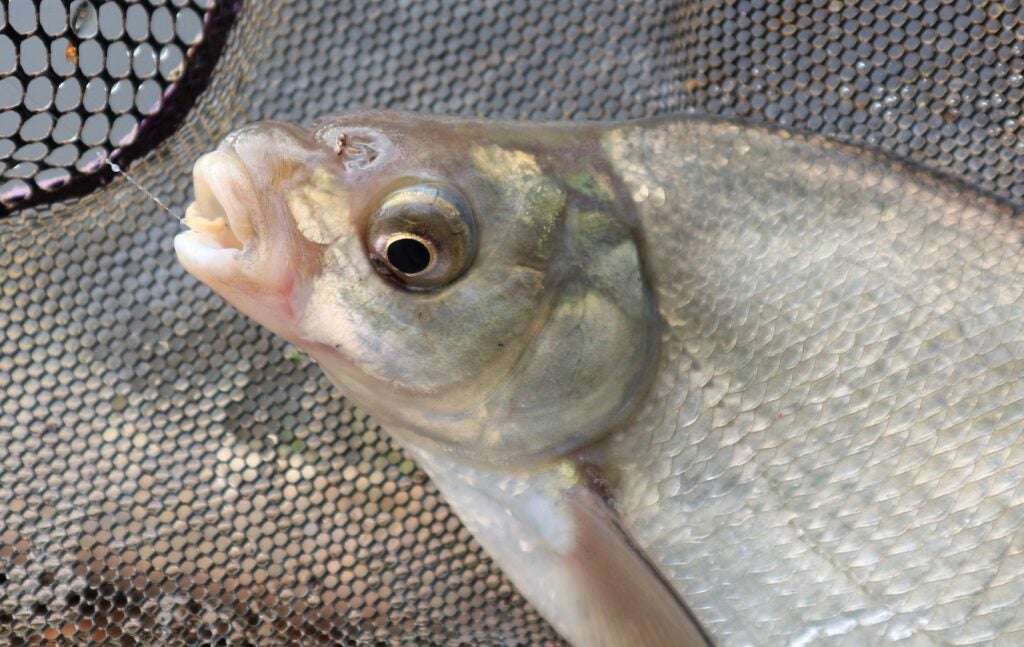
With skimmers knocking about I was getting small fizzes of bubbles over my feed area, but as usual the larger fish were proving tricky to fool. I eventually found a way, changing back to two or three squatts on the hook, pushing the bigger strung shot on the rig closer together and moving the float up a few inches. By dumping the rig in and laying the hook bait several inches over-depth, it took much longer to get bites, but when they came the float sailed away and some quality skimmers resulted. It also helped occasionally by twitching the hook bait, as it was lying over the bed of dark groundbait and squatts. The groundbait I was using was active, by the way, containing some crushed hemp and other seeds, which I think helped to stir a positive reaction. Because squatts don’t move much when submerged in water, certainly nothing like pinkies, chopped worm and big maggots, you need to keep working them to maintain some interest.
DIFFERENT WAYS
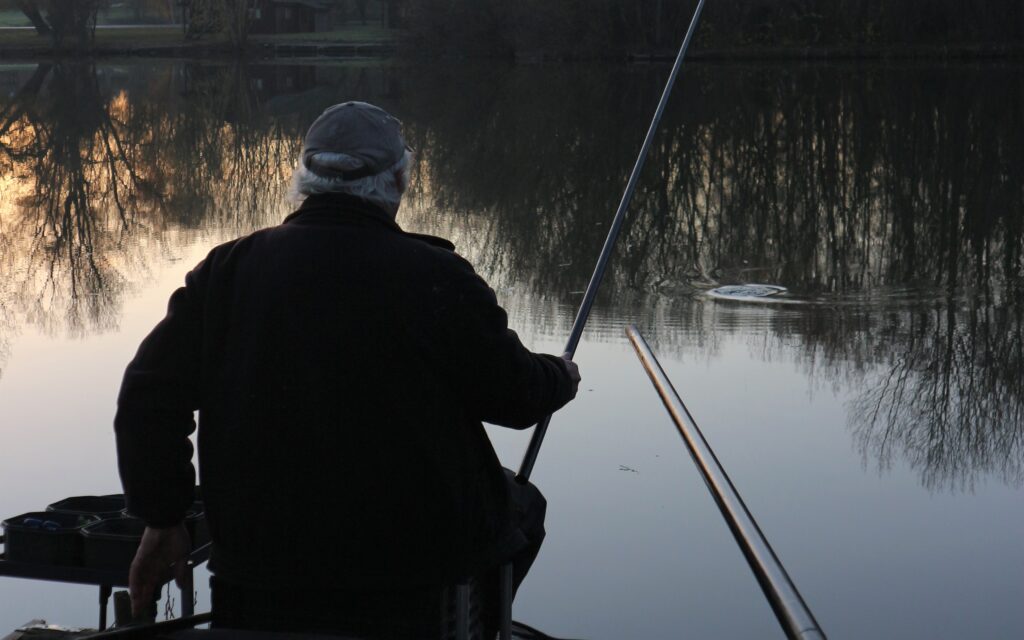
Nowadays we use micro pellets, active groundbait and chopped worm as swim activators, but years back it was bloodworm, jokers and squatts, all baits that could wake up lethargic fish. Sometimes they were all misunderstood, even banned in the case of the little red men, as bloodworm and jokers were called. It was argued you needed big quantities of these baits to compete, which made match fishing expensive at the time. However, in reality I found you didn’t have to buy your fish with bloodworm and joker, or squatts for that matter. I always struggled to get through a pint of jokers and a handful of bloodworm for the hook, mainly because once these baits had done their job and brought pegs to life, it wasn’t long before I was switching to pinkies, maggots or casters to find better quality fish. A typical match haul would be a couple of pounds of bits early, heavily boosted by larger silvers as bigger baits were introduced.
SQUATT LOGIC
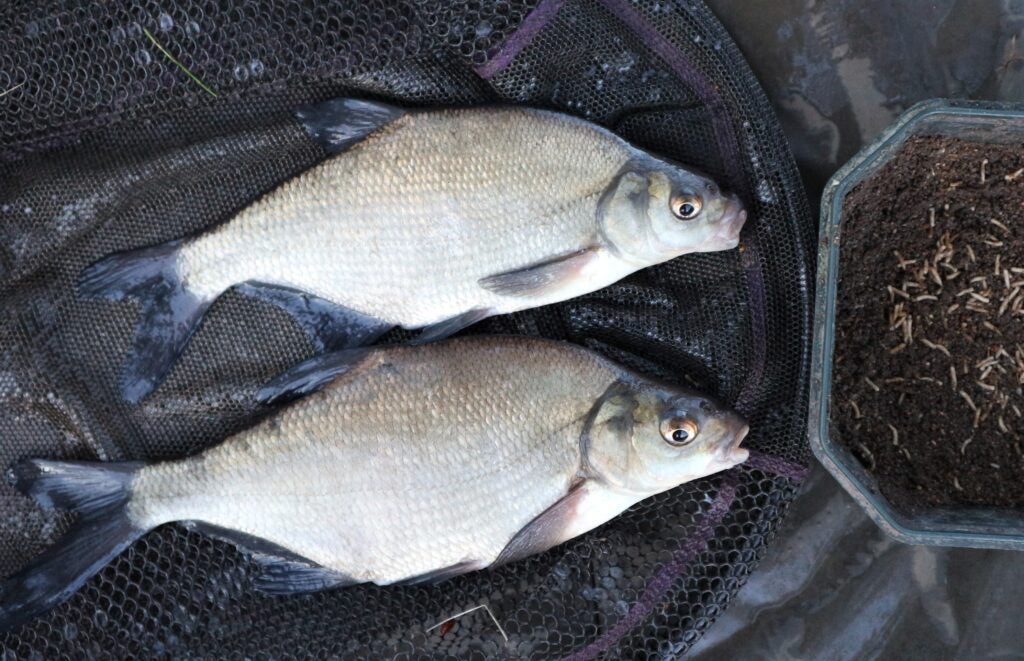
Normally a pint of squatts was enough for a five-hour match. The only occasions I can remember requiring more was when big weights of skimmers and proper bream were on the cards. But even then it was virtually impossible to get through a couple of pints of this bait, including when spraying the tiny maggots over an Image balsa canal waggler. You needed to feed greater quantities doing that, but a match win on the Luton stretches of the Union with over 30lbs of skimmers still didn’t see me using up the whole two pints I had with me. On the Oxford I enjoyed a great run of success on Pat O’Connor’s popular Opens, only ever requiring a pint of red squatts. Why red? Well, everyone else was using white ones and being different seemed to help! I also believed the fish could see red better in the heavily coloured water caused by busy boat traffic. I was using different tactics from most other anglers, bagging up shallow with mini-wagglers.
JUNGLE TRAINING
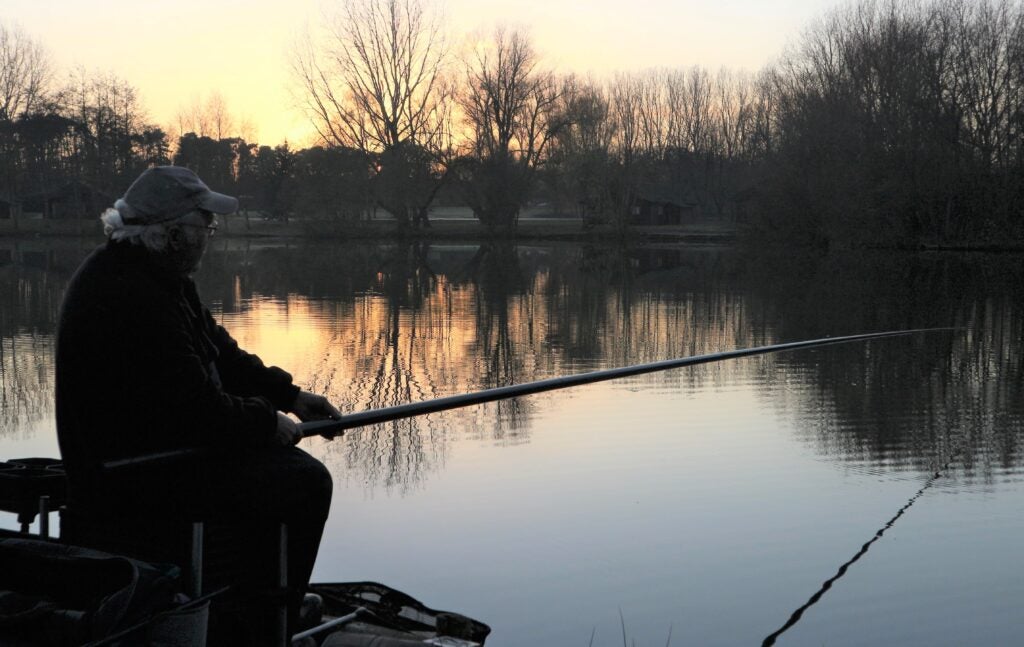
Another venue where squatts made a big difference was the River Cam at Clayhithe. There was a part called ‘The Jungle’, due to heavy tree cover. It looked great but was always tricky. I framed in an Open match there and blew out on another. You could choose your section in winter leagues at the time and nobody wanted that area, so I volunteered to go practice it. I discovered the best way was to switch between strung and bulked rigs, feeding occasional hard balls of squatt-laced groundbait and loose feeding the tiny maggots over the top. I caught roach running through on a long line with the strung rig. However, every now and then switching to a bulked set-up set several inches over-depth, anchoring the hook bait hard on the bottom, I would be rewarded with big bonus skimmers. On the Winter League anglers close by only caught roach. My extra edge with the skimmers doubled that. Similar rigs were now scoring well on a deep lake.
PRIME TIME
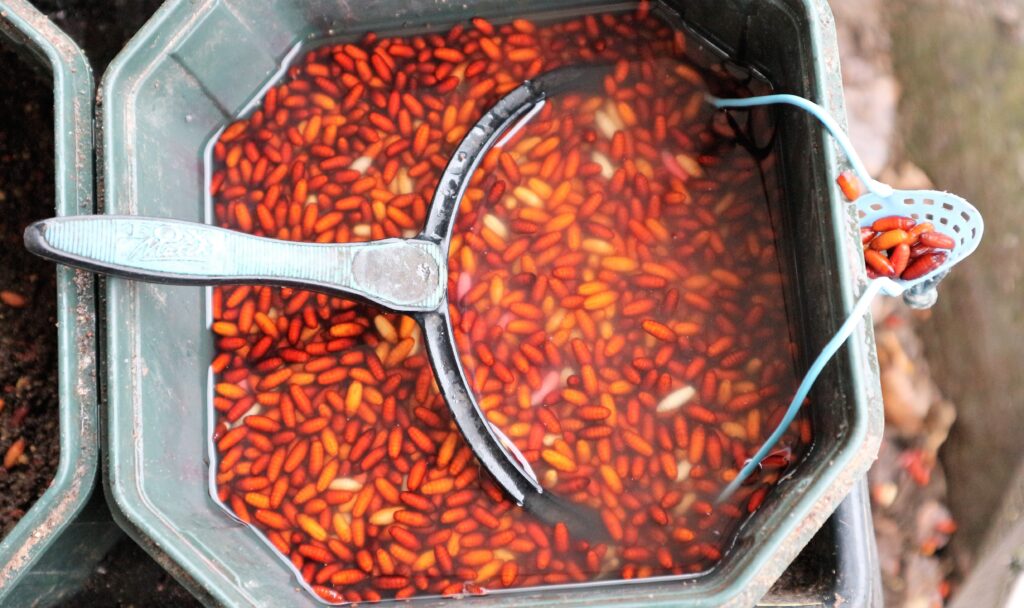
When using small baits like squatts, pinkies, bloodworm, joker or punched bread, it’s always worth looking for bonus fish during the latter part of sessions. All the small fish activity invariably pulls something bigger in and one of the best baits for finding what’s there is casters. With only an hour of daylight left on a short winter’s day, I started catapulting a few crispy shells regularly over where I had been cupping in squatts and groundbait. I had a shallow rig set up and didn’t really expect to catch on that. I brought it into play anyway, because as often happens as the light begins to fade, odd roach were showing on the surface. I got a few fast knocks on the float and managed to hook a couple of small fish on caster, but it didn’t feel right. I decided to revert to my over-depth rig, but this time with a single caster, playing the waiting game. It took a few minutes to get proper bites. Several better roach and a couple of chunky perch resulted.
SWITCHING ON
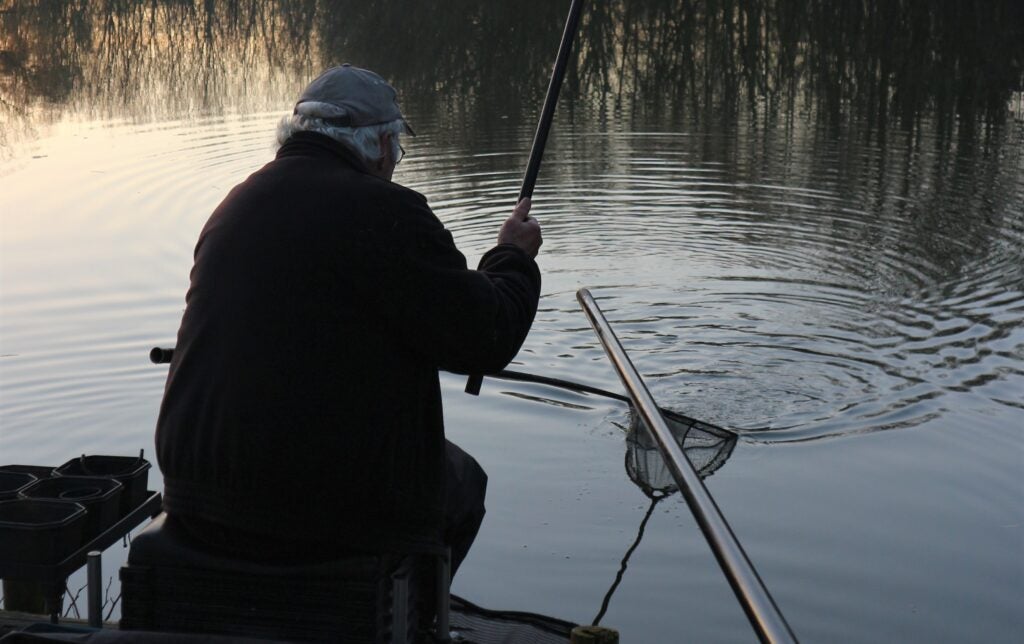
After that quick flurry of action, I had to wait longer for more interest. As the wintry sun was dipping down behind the trees on the horizon, suddenly something about my swim changed. It was like an electric charge had woken it up and it became a different ball game altogether. I connected with a much stronger force, which pulled a few feet of light elastic from the top sections of my pole. A superb big roach was soon in my landing net, its red fins bristling as I picked it up and admired the perfect fish. It was like it had come from another world which, during those magical last minutes of daylight, comes and goes far too quickly when the nights draw in so early. Those regular casters dimpling around my delicate pole float were beginning to make a difference, pulling in bigger fish. I suspect they were always there, hanging back on the far edges of where my groundbait and squatts had earlier kept me busy with the small stuff and skimmers.
WORTH TRYING
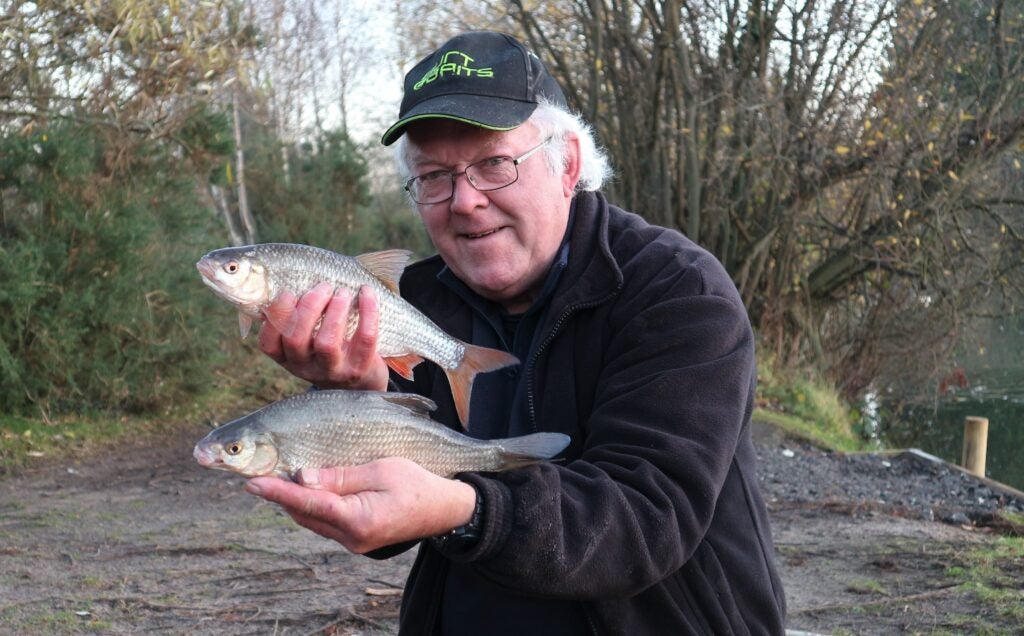
While the days of getting my head down and aiming for hundreds of small fish for a good tally on low weight matches might be largely gone, using squatts again reminded me that they are still worth considering for kick-starting dour swims in cold weather. Adding some to groundbait mixes, either when cupping with the pole or using an open-end feeder, seems like a good plan if they provoke a much quicker response. You don’t really need to use these tiny maggots on the hook, a bit like utilizing micro pellets to attract fish and then getting them feeding on larger baits. The main thing is, that first pint of squatts for a long time helped me catch loads of fish over two chilly sessions, on both occasions finishing with bigger bonuses like these beauties. As you can see here, apart from big roach, often elusive hybrids turned up too. While normally trying to avoid small fish, getting them active in winter can definitely help to pull in bigger samples.
The post Forgotten Bait first appeared on FishingMagic Magazine.
Continue reading...

I’ve fished the Old River Nene at Benwick a couple of times since moving to the Midlands, also recently having a look at nearby March, both areas being immensely popular match venues in winter. It’s been that way for several decades, because the canal-like waterway is normally crammed with fish when the weather turns colder. This has created a continued demand for a cult bait most anglers have probably forgotten about, or simply can’t get any more: tiny maggots called squatts. They were very important when I used to fish the London and Oxford Canals many years ago, even becoming a main line of attack. On some venues it was possible to get through nearly a couple of pints of these tiny feed maggots in a five-hour match, not just catching small fish. Skimmers, bream and quality roach loved this bait which, apart from being used with pole and whip tackle, also spawned a big trend with light canal waggler tactics.
STARTING OVER

There’s a bait farm just off the A1, north of Grantham at Long Bennington. Stopping off to pick up my usual maggots and casters, they told me they had started producing squatts again, so I thought it would be interesting to buy a pint and give them a go. I’m pretty sure these tiny maggots haven’t been used on many of the places I regularly fish and it would be fascinating to revisit old techniques, finding out if this bait could still work its magic. It was freezing cold and normal approaches were struggling anyway, which only added to the mystery factor. As I prepared some dark groundbait to use alongside, memories came flooding back. Catching big bags of skimmers by spraying white squatts over a waggler on the Grand Union on venues like Grove Church, and doing similar with red squatts on the highly coloured Oxford Canal towpaths, enjoying bumper bags of roach there. It was a bit like bloodworm and joker fishing, always keeping busy.
NAILING IT

I began by cupping in a couple of hard balls of groundbait, well laced with squatts, finishing off with a powdery portion, to try and stir things up more quickly. I wasn’t sure about loose feeding, because the swim I had chosen was quite deep. I didn’t want to end up chasing all over the place to keep in touch with the fish, plus there were lots of small roach, rudd and perch to contend with. I needn’t have worried because it took a long time to get a reaction. It was one of those damp, cold, dour winter days. Nobody seemed to be catching much, but having said that, I started getting bites after an hour. To begin with they were iffy takes, with the odd hand-sized skimmer resulting when I did manage to connect. As was always typical with squatts, most action occurred on the drop as my hook bait neared bottom, or just after it settled. This prompted me to feed small balls of groundbait more regularly, which began to build the swim up nicely.
PERFECT RIGS

These old Milo pole floats were spot-on with spread shot from just below mid-depth, helping to slow down the fall of single or double squatt hook baits. I did get tempted into trying loose feeding with a catapult, but quickly stopped when I was blitzed by small stuff. The bigger fish were down deep and didn’t want to budge, so it was back to groundbait as a medium to get the small grubs closer to the deck. I tried slightly suspended hook baits but that didn’t work. The best setting was to have my rigs a couple of inches over-depth. If a bite didn’t come on the way down, or after a couple of minutes with the rig stationary, it was best to lift the tackle up and let it settle again. This tactic caught better-sized roach on the move, along with bigger skimmers just after settling. Those tiny maggots were definitely waking the fish up, so I began to try some old tricks that worked all those years ago, switching to pinkie and then a big maggot on the hook.
GROUNDBAIT EFFECTS

I had forgotten how you can get away with feeding groundbait more regularly with squatts, mainly using it as a medium to get the tiny maggots where you want them. Every time I cupped in a generous ball, probably containing around 50 to 60 grubs, the fish homed in on it straight away. This was interesting because having tried similar tactics with my usual chopped worm and caster approach recently, anything in the swim was backing off after the third or fourth time of feeding. It was mainly small skimmers, perch and roach that were responding straight away, while if I had to wait a bit longer for bites to develop, bigger samples resulted. It was also interesting to find out bites came quicker with a bigger pinkie or red maggot on the hook, although the better-sized skimmers seemed to prefer double squatt offerings. The best response came by feeding big balls of groundbait occasionally and small ones more regularly in between.
TEASING THEM

With skimmers knocking about I was getting small fizzes of bubbles over my feed area, but as usual the larger fish were proving tricky to fool. I eventually found a way, changing back to two or three squatts on the hook, pushing the bigger strung shot on the rig closer together and moving the float up a few inches. By dumping the rig in and laying the hook bait several inches over-depth, it took much longer to get bites, but when they came the float sailed away and some quality skimmers resulted. It also helped occasionally by twitching the hook bait, as it was lying over the bed of dark groundbait and squatts. The groundbait I was using was active, by the way, containing some crushed hemp and other seeds, which I think helped to stir a positive reaction. Because squatts don’t move much when submerged in water, certainly nothing like pinkies, chopped worm and big maggots, you need to keep working them to maintain some interest.
DIFFERENT WAYS

Nowadays we use micro pellets, active groundbait and chopped worm as swim activators, but years back it was bloodworm, jokers and squatts, all baits that could wake up lethargic fish. Sometimes they were all misunderstood, even banned in the case of the little red men, as bloodworm and jokers were called. It was argued you needed big quantities of these baits to compete, which made match fishing expensive at the time. However, in reality I found you didn’t have to buy your fish with bloodworm and joker, or squatts for that matter. I always struggled to get through a pint of jokers and a handful of bloodworm for the hook, mainly because once these baits had done their job and brought pegs to life, it wasn’t long before I was switching to pinkies, maggots or casters to find better quality fish. A typical match haul would be a couple of pounds of bits early, heavily boosted by larger silvers as bigger baits were introduced.
SQUATT LOGIC

Normally a pint of squatts was enough for a five-hour match. The only occasions I can remember requiring more was when big weights of skimmers and proper bream were on the cards. But even then it was virtually impossible to get through a couple of pints of this bait, including when spraying the tiny maggots over an Image balsa canal waggler. You needed to feed greater quantities doing that, but a match win on the Luton stretches of the Union with over 30lbs of skimmers still didn’t see me using up the whole two pints I had with me. On the Oxford I enjoyed a great run of success on Pat O’Connor’s popular Opens, only ever requiring a pint of red squatts. Why red? Well, everyone else was using white ones and being different seemed to help! I also believed the fish could see red better in the heavily coloured water caused by busy boat traffic. I was using different tactics from most other anglers, bagging up shallow with mini-wagglers.
JUNGLE TRAINING

Another venue where squatts made a big difference was the River Cam at Clayhithe. There was a part called ‘The Jungle’, due to heavy tree cover. It looked great but was always tricky. I framed in an Open match there and blew out on another. You could choose your section in winter leagues at the time and nobody wanted that area, so I volunteered to go practice it. I discovered the best way was to switch between strung and bulked rigs, feeding occasional hard balls of squatt-laced groundbait and loose feeding the tiny maggots over the top. I caught roach running through on a long line with the strung rig. However, every now and then switching to a bulked set-up set several inches over-depth, anchoring the hook bait hard on the bottom, I would be rewarded with big bonus skimmers. On the Winter League anglers close by only caught roach. My extra edge with the skimmers doubled that. Similar rigs were now scoring well on a deep lake.
PRIME TIME

When using small baits like squatts, pinkies, bloodworm, joker or punched bread, it’s always worth looking for bonus fish during the latter part of sessions. All the small fish activity invariably pulls something bigger in and one of the best baits for finding what’s there is casters. With only an hour of daylight left on a short winter’s day, I started catapulting a few crispy shells regularly over where I had been cupping in squatts and groundbait. I had a shallow rig set up and didn’t really expect to catch on that. I brought it into play anyway, because as often happens as the light begins to fade, odd roach were showing on the surface. I got a few fast knocks on the float and managed to hook a couple of small fish on caster, but it didn’t feel right. I decided to revert to my over-depth rig, but this time with a single caster, playing the waiting game. It took a few minutes to get proper bites. Several better roach and a couple of chunky perch resulted.
SWITCHING ON

After that quick flurry of action, I had to wait longer for more interest. As the wintry sun was dipping down behind the trees on the horizon, suddenly something about my swim changed. It was like an electric charge had woken it up and it became a different ball game altogether. I connected with a much stronger force, which pulled a few feet of light elastic from the top sections of my pole. A superb big roach was soon in my landing net, its red fins bristling as I picked it up and admired the perfect fish. It was like it had come from another world which, during those magical last minutes of daylight, comes and goes far too quickly when the nights draw in so early. Those regular casters dimpling around my delicate pole float were beginning to make a difference, pulling in bigger fish. I suspect they were always there, hanging back on the far edges of where my groundbait and squatts had earlier kept me busy with the small stuff and skimmers.
WORTH TRYING

While the days of getting my head down and aiming for hundreds of small fish for a good tally on low weight matches might be largely gone, using squatts again reminded me that they are still worth considering for kick-starting dour swims in cold weather. Adding some to groundbait mixes, either when cupping with the pole or using an open-end feeder, seems like a good plan if they provoke a much quicker response. You don’t really need to use these tiny maggots on the hook, a bit like utilizing micro pellets to attract fish and then getting them feeding on larger baits. The main thing is, that first pint of squatts for a long time helped me catch loads of fish over two chilly sessions, on both occasions finishing with bigger bonuses like these beauties. As you can see here, apart from big roach, often elusive hybrids turned up too. While normally trying to avoid small fish, getting them active in winter can definitely help to pull in bigger samples.
The post Forgotten Bait first appeared on FishingMagic Magazine.
Continue reading...
